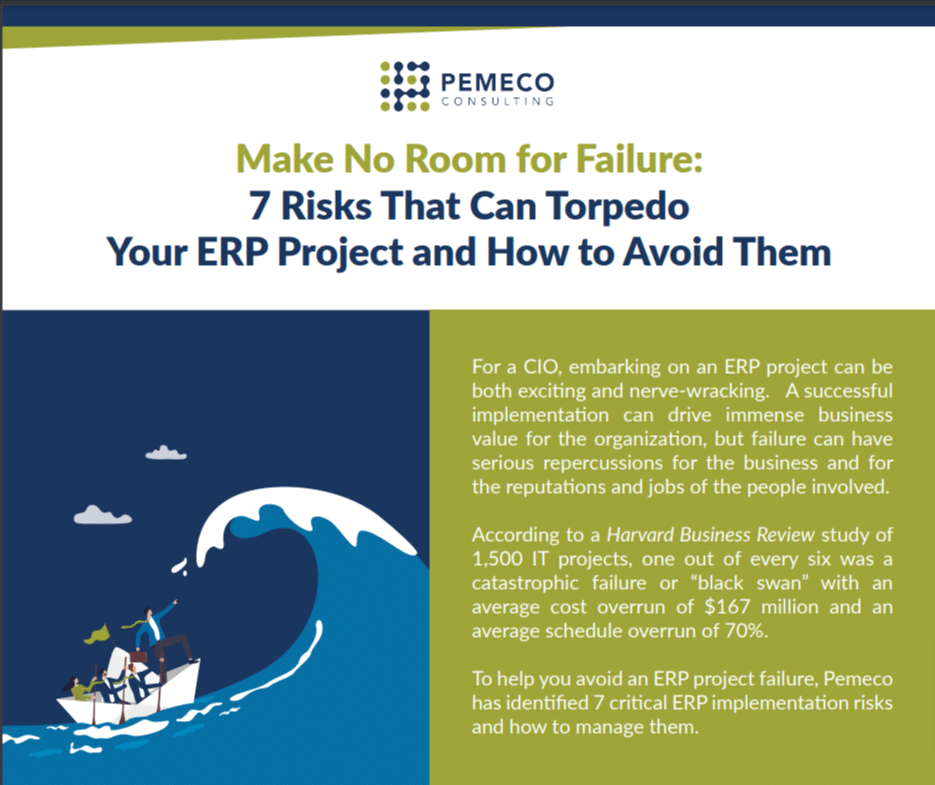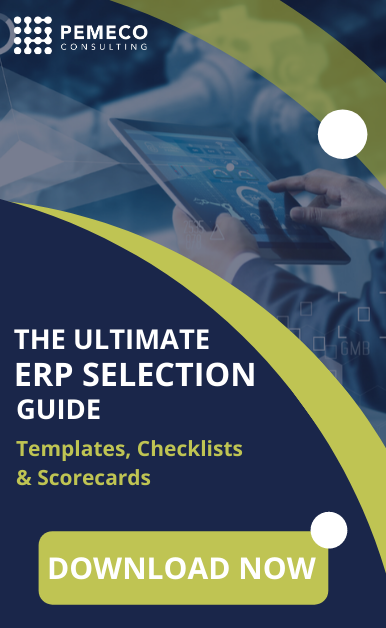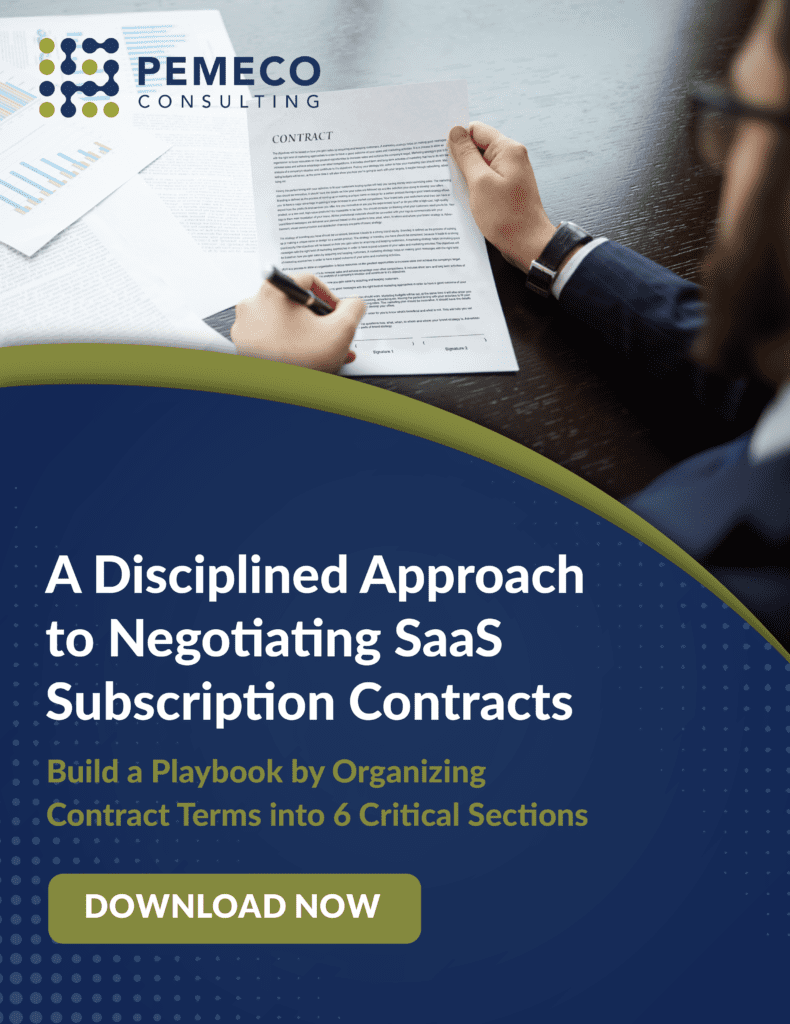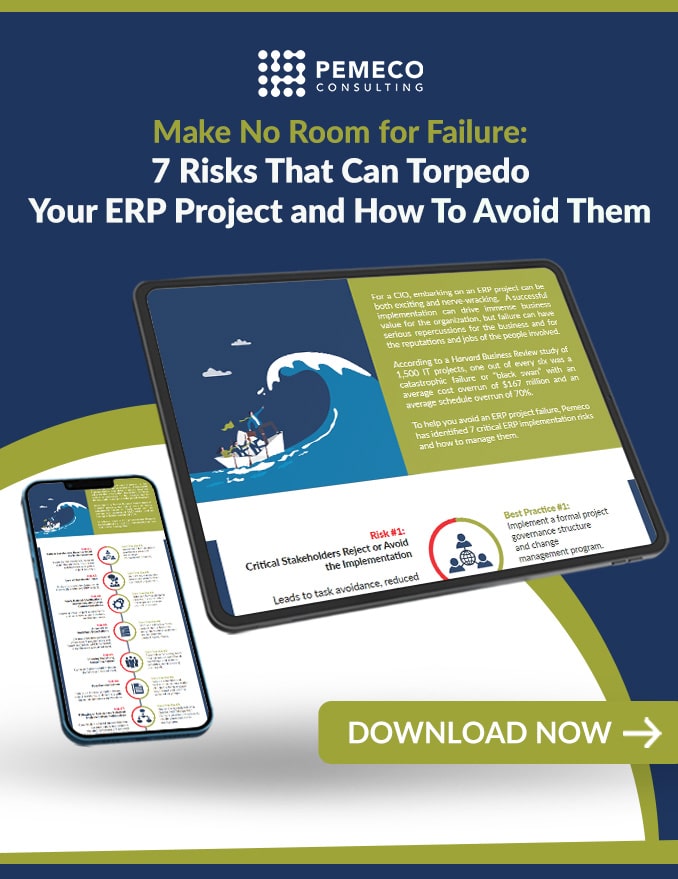ERP best-practices and accelerators are marketed as tools to quickly implement proven and efficient business processes. We define ERP best-practices and implementation accelerators in our companion article, Top 3 Benefits of ERP Best-Practices and Implementation Accelerators.
But do these best-practices and accelerators live up to the hype? Are there pitfalls companies should be aware of?
Here are four myths about ERP best-practices and implementation accelerators.
MYTH 1: ERP Implementation Accelerators are Right for Companies of all Shapes and Sizes
REALITY: Many companies won’t fit into the accelerator box.
Sometimes accelerators don’t work as advertised. We recently worked with three Fortune-1000 companies that bought the promise of ERP implementation accelerators only to learn that the methodologies did the opposite of what was promised. For each, it would have been cheaper, faster, and better to have implemented without them.
Accelerators might not be suitable for companies with mature and stable business processes or whose business processes cross business models – for example, a company that sells hardware, software, and services on a single sales order. Companies with entrenched unique business processes will learn that they often have little choice but to change the software to meet their business needs, particularly when those business needs are competitively advantageous.
MYTH 2: ERP Implementation Accelerators are Plug-and-Play
REALITY: Accelerators are starting point templates and aren’t set-it-and-forget-it
It’s true: a good accelerator includes a measure of system pre-configuration, a business process blueprint, and maybe even test scripts and training documents. However, it’s important to remember that it’s called an accelerator, not plug-and-play-ERP.
The reality is that companies still need to tune the accelerators to their specific needs, map and migrate the data, run the system through a battery of structured tests, and train the end-users.
MYTH 3: Accelerators Always Result in Major Budget and Timeline Reductions
REALITY: Accelerators offer benefits, but seldom to the extent advertised
ERP implementation accelerators can reduce costs and shorten schedules, particularly in the early project phases and particularly for adoption of new business processes. However, representations that accelerators can lead to major schedule and cost benefits are often overblown (except in the case of greenfield startups).
In the early phases, companies can gain efficiencies on the early process mapping and documentation phases. If a company is implementing 200 business scenarios and accelerators fit 100 of those scenarios, that can lead to savings early on.
However, there is still a lot of work to be done. And, the work is pushed from the software to the business practice. There’s a well-worn adage: “do you change your business to fit the system, or do you change the system to fit your business?”. The point is that the change must happen somewhere, and that change takes time, effort, and money. Pick a business process (a manufacturing work order or sales order process, for example), and think about how much time it would take to overhaul your business process.
MYTH 4: As of Cutover, Companies Reap Major Benefits From the Best-Practices
REALITY: Change is hard, and it always takes time to generate the ROI
Many companies think that once they flip the switch on their new ERP system, they immediately start realizing big-time benefits from best-practice business processes. They think that transactions will seamlessly flow cross-functionally, errors will be significantly reduced, and managers will make much better decisions with timely analytics.
This idea of immediate benefits realization is probably one of the biggest misconceptions. In fact, business should expect a performance dip at cutover, because it takes time to become proficient with the new processes and systems.
Before the new systems, employees could do their jobs in their sleep – inefficiencies and all. At cutover, there’s a major adoption effort to get the organization up to speed on the news processes. Expect questions like “what does this required “type” field mean?” and even “how do I log into the system?”. Processes will be slow, mistakes will be made, and transactions will have to be cancelled and reversed. Adoption takes time and patience.
Eventually, employees learn the new system and climb the adoption curve. That’s when the company starts to realize the major benefits. The bottom line is that senior management needs to have appropriate performance expectations. When modelling ROI and benefits realization, factor a post go-live performance dip followed by an incremental recovery.
THE TRUTH: ERP Best-Practices and Implementation Accelerators Are Valuable – But Don’t Expect a Magic Bullet
ERP implementation accelerators and best-practices can be powerful tools for adopting proven practices. However, they are not a panacea. So, beware standard ERP vendor sales and marketing pitches that promise faster, shorter, easier, and cheaper.
When considering the utility and value of implementation accelerators, do your homework. Here are four steps to guide you on your journey:
- Catalogue your future-state business requirements and process needs
- Identify whether they’re strategic or critical – you won’t want to sacrifice these
- When evaluating accelerators, take a deep dive into their construction and supporting materials
- Validate how many accelerators fit your future state models, how many need to be modified, and how many will not apply
By following this standard approach, you’ll have a strong foundation to build an implementation scope and budget from the bottom – and be well-positioned to assess how well ERP best-practices and accelerators fit your business.







